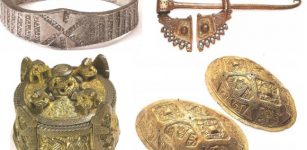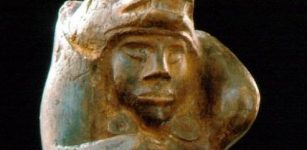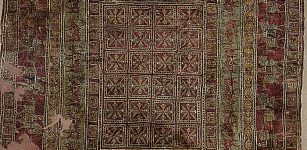Book Of Mormon And Other Hidden Ancient Documents
MessageToEagle.com – In the late 1820s, when Joseph Smith announced that he’d recovered an ancient book that had been written on metal plates and concealed by one of its authors in a stone box, his claim was widely derided.
It still is.
But the idea of an ancient book hidden up to come forth at a future time no longer seems quite so ridiculous — not, at least, to those who’ve been following the relevant archaeological developments.
In 1945, for example, a number of Christian manuscripts were found in Egypt at Nag Hammadi, ancient Chenoboskion.
Dating to the fifth century A.D. and including writings purporting to be from Jesus Christ’s apostles, they’d been hidden in a pottery jar and buried in the ground,’ according to Deseret News.
Two or three years later, an even larger and older collection, this time of ancient Jewish documents, began to be discovered in caves located at or near Qumran, on the western shore of the Dead Sea.

A fragment, at least, of every book of the Old Testament was eventually found among the documents — the brief book of Esther being the only omission — along with many other important ancient texts.
One of the latter, the so-called “Copper Scroll,” was written on a rolled metal plate, and, intriguingly, it described where various treasures, including other books, were to be located. (Unfortunately, the clues are so obscure to us today that, thus far, those other items haven’t been found.)
At this point, scholars are aware of numerous ancient document burials in stone boxes, and of many ancient texts, religious and otherwise, that are inscribed upon metal plates.
In 2000, John Tvedtnes (formerly a member of the staff of the Maxwell Institute at BYU) published “The Book of Mormon and Other Hidden Books,” in which he discusses specific examples of such writings and such burials from across the ancient and medieval Near East.

Another of Joseph Smith’s claims that continues to meet with derision says that the Book of Mormon was originally written in “reformed Egyptian.” Some critics have made merry over this, describing “reformed Egyptian” as a mythical language that never existed. In a series of articles and a book (“Delusions”) published already in 1831-1832, Alexander Campbell scoffed at the idea of a record having been translated “from the reformed Egyptian!”
See also:
Ancient Books, Scrolls And Manuscripts Burned By Church And Evil Emperors
Herculaneum Time Capsule: Ancient Scrolls With Secrets Buried Under Volcanic Ash And Stones
Sibylline Books: Ancient Prophecies Destroyed By Fire
Moreover, virtually since the publication of the Book of Mormon in 1830, critics have mocked the sheer thought that an ancient Hebrew would ever write anything sacred in the language of the hated pagan Egyptians, Israel’s longtime enemies.
Most serious, believing students of the Book of Mormon, by contrast, have taken the term to refer not to a separate language but to a non-Hebrew script that, they suggest, was used to record Lehi’s and Nephi’s native early Hebrew.
Only in the 20th century — far too late for Joseph to have borrowed the idea from them — did ancient Hebrew texts begin to be found that had been written in Egyptian script. Some come from the very time of Lehi.
Most are magical incantations in which, while the underlying language is an early form of Hebrew or (closely related) Canaanite, the script is hieratic Egyptian, a cursive (or, one might say, “reformed”) variant of the hieroglyphs with which most of us are familiar. Papyrus Amherst 63, a fourth-century B.C. document written in yet another cursive (or “reformed”) Egyptian script, called “demotic,” includes an Aramaic version of Psalm 20:2-6. Strikingly, this papyrus represents the second-oldest known biblical text.

The third-oldest biblical texts are the Dead Sea Scrolls already mentioned above. But the very earliest biblical manuscripts known to scholars were found in a tomb in Jerusalem in 1980. Dated to the time of Lehi — that is, to the end of the seventh century before Christ — they’re in the form of two rolled silver leaves that have been inscribed with the well-known “priestly blessing” of Numbers 6:24-26. .
First version of this article was originally published on February 6, 2015
Copyright © MessageToEagle.com This material may not be published, broadcast, rewritten or redistributed in whole or part without the express written permission of MessageToEagle.com










